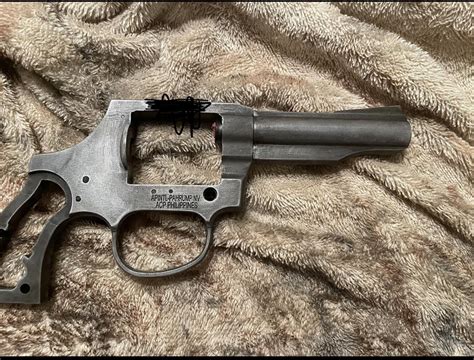How To Remove Parkerized Finish
Ronan Farrow
Apr 02, 2025 · 3 min read

Table of Contents
How to Remove Parkerized Finish: A Comprehensive Guide
Parkerizing, a conversion coating process, offers excellent corrosion resistance to metal. However, there might be times when you need to remove this finish, perhaps for refinishing, restoration, or other modifications. This guide details safe and effective methods for removing a parkerized finish. Remember always to prioritize safety and wear appropriate protective gear.
Understanding Parkerizing
Before diving into removal techniques, let's briefly understand what parkerizing is. It's a chemical conversion coating that creates a phosphate layer on the metal's surface, providing a matte, dark gray finish. This layer is relatively thin but offers significant protection against rust and corrosion. Its tenacious bond to the metal, however, makes removal challenging.
Methods for Removing Parkerized Finish
Several methods can be employed to remove parkerizing, each with its own advantages and disadvantages:
1. Mechanical Removal: Abrasion and Grinding
This is the most straightforward approach, involving physically removing the parkerized layer through abrasion.
- Sandblasting: This method is effective for larger areas, using compressed air to propel abrasive media against the surface. It's powerful but can damage the underlying metal if not carefully controlled.
- Grinding: Using progressively finer grit grinding wheels or sandpaper, you can gradually remove the parkerized layer. This offers greater control but is more labor-intensive for larger surfaces.
- Wire Wheel: A wire wheel attached to a drill or bench grinder can be effective, particularly in removing parkerizing from intricate areas. However, it can also leave scratches on the underlying metal.
Important Considerations: Mechanical removal generates significant dust and debris. Always wear a respirator and eye protection. The underlying metal may require further finishing after removal.
2. Chemical Removal: Acid Etching
Chemical removal uses acids to dissolve the phosphate coating. This method requires caution and strict adherence to safety guidelines.
- Acid solutions: Specific acids, such as phosphoric acid or a commercial metal cleaning solution, can be used. Always follow the manufacturer's instructions carefully. These solutions are corrosive and must be handled with appropriate personal protective equipment (PPE), including gloves, eye protection, and ventilation.
- Immersion or application: The process may involve immersing the part in the acid solution or applying it directly. The duration depends on the solution's strength and the parkerized layer's thickness.
- Neutralization: After the parkerizing is removed, the metal must be thoroughly neutralized with a base solution (like baking soda solution) to stop the acid reaction. Then, rinse thoroughly with clean water.
Important Considerations: Chemical removal generates hazardous waste. Dispose of the used solutions according to local regulations. Improper handling can cause severe burns and injuries. Test on a small, inconspicuous area first to check for compatibility.
3. Electrolytic Removal
Electrolytic removal uses an electrochemical process to dissolve the parkerized layer. This requires specialized equipment and knowledge of electrochemistry.
- Electrolyte solution: A specific solution acting as an electrolyte is required.
- Electrical current: A low direct current (DC) electrical current is applied to the part, which acts as the anode, dissolving the parkerized layer.
- Safety precautions: This process is particularly hazardous and requires expertise in electrochemistry and appropriate safety measures.
Important Considerations: This method is typically used in industrial settings due to the complexity and safety concerns.
Choosing the Right Method
The best method depends on factors such as the size and shape of the part, the thickness of the parkerized layer, the availability of tools and equipment, and your level of experience. For small parts or delicate work, chemical or mechanical methods like fine sandpaper or a wire brush might suffice. For larger parts or complete removal, sandblasting or electrolytic removal might be more efficient.
Remember, safety is paramount. Always wear appropriate protective gear, work in a well-ventilated area, and dispose of waste materials properly. Consult safety data sheets (SDS) for any chemicals used. If unsure, it's best to consult a professional for assistance.
Featured Posts
Also read the following articles
| Article Title | Date |
|---|---|
| How To Treat Histamine Reaction After Waxing | Apr 02, 2025 |
| How To Start A Gun Store | Apr 02, 2025 |
| How To Repair Fibreglass Pool | Apr 02, 2025 |
| How To Sell Alcohol | Apr 02, 2025 |
| How To Read Iowa Assessment Test Results | Apr 02, 2025 |
Latest Posts
Thank you for visiting our website which covers about How To Remove Parkerized Finish . We hope the information provided has been useful to you. Feel free to contact us if you have any questions or need further assistance. See you next time and don't miss to bookmark.
